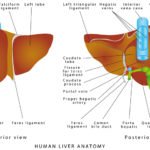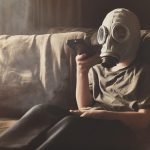The 2000 film Erin Brockovich1 not only gave Julia Roberts a chance to transform from mere “pretty woman “to actual intelligent woman in the leading role, but more significantly, the film brought public attention to the fact that environmental pollution in a community can cause clusters of disease. The story centered on the town of Hinkley, California, where the Pacific Gas and Electric Company had released the highly toxic chemical Chromium-6 into the water supply, ostensibly causing numerous cases of cancer and disability. While some experts now claim that the chromium 6 did not cause cancer in Hinckley, after all2, it would be hard to argue with the fact that in other Hinkleys across the US, rates of particular types of cancer appear in inordinately high concentrations. And where these “disease clusters” appear, there’s usually some noxious chemical being released in the vicinity.
According to the US Center for Disease Control, a disease cluster is “… an unusual number, real or perceived, of health events (such as reports of cancer) grouped together in a time and location.” A just-released report by the Natural Resources Defense Council and the National Disease Clusters Alliance identifies 42 “disease clusters” in the US, spread out among 13 states.3 The report was culled from previous studies in Texas, California, Michigan, North Carolina, Pennsylvania, Florida, Ohio, Delaware, Louisiana, Montana, Tennessee, Missouri and Arkansas, and so the clusters named are in these states, but certainly clusters exist in other regions as well.
While a specific pollutant hasn’t yet been identified as a causative agent in most of the clusters, in Libby, Montana, asbestos clearly has triggered the epidemic rates of lung-cancer and other asbestos-related diseases. The asbestos contamination in Libby came from W.R Grace & Co.’s mining operations, where workers disregarded safety protocols and came home in clothing coated with asbestos fiber, contaminating entire families.
In other communities, local residents suspect contamination as being the source of disease outbreaks, but so far, they haven’t had much luck proving it. One such community is Kettleman, California, where a report by the state department of health notes, “Children were born with cleft palates and other severe birth defects such as facial deformities, heart and brain problems, and limb defects.4 Four of those children have since died. Many residents blame the hazardous waste disposal facility, the largest in the western United States, that is just 3.5 miles southwest of town.” Farther south, in the town of Montecito near Santa Barbara, residents suspect that a cluster of cases of childhood leukemia and lymphoma may be linked to the elevated levels of electromagnetic fields emanating from a transformer right near the elementary school, but again, so far, there’s no proof.
The problem is that it’s difficult to draw a direct line from environmental contamination to the occurrence of disease. As Gina Solomon, an author of the California report notes, “Unfortunately, often clusters don’t get fully investigated; or when they do, often the investigations come up with clues but no clear cause.” And until those awful “clues” surface, local residents typically haven’t any idea that they’re experiencing toxic exposure every day.
Maybe that’s because people don’t just simultaneously keel over in droves from chemical or environmental contamination. Rather, if exposure is involved, illness develops slowly, and those who don’t want to admit the link (particularly the companies doing the polluting) point to numerous other factors that “could” be causing the problem. For instance, researchers found a breast cancer cluster in Michigan’s Midland, Bay and Saginaw Counties in the years 1985 to 2002.5 While it seems likely that the Dow Chemical Company plant in the area played a role in the concentration of the disease, the so-called experts say that it’s too early to tell if there’s a link, and that the increased rates of cancer may simply reflect increased rates of mammogram screening. That same logic, however, doesn’t explain the 60 men at Camp Lejeune in North Carolina who have turned up with male breast cancer. It’s quite doubtful that they had multiple mammograms.
In all of these cases, as the experts dither about whether the highly toxic carcinogenic substances permeating the local environment actually did cause cancer in local victims, the company gets to avoid cleaning up the toxic mess, potentially triggering yet more cases.
Certainly, the existence of disease clusters gives new meaning to the realtor’s favorite chant: “location, location, location.” Even the nicest neighborhoods can be subject to contamination, and people often don’t know that they’re living in a toxic zone until it’s too late — until they’ve already had exposure, or worse, gotten sick. As for choosing where to live, the NRDC study gives a heads-up for the areas it scrutinized, and the researchers do plan to continue investigations to look at all 50 states. Their reports will provide some clues, but contaminated areas where disease hasn’t yet surfaced may not be discovered until it’s too late, and then, in those areas with spikes in disease, the experts may dismiss the environmental factors as insignificant, as they have been wont to do so far. On the good news front, right now there’s legislation pending in Congress that would help communities to investigate links between elevated levels of illness and environmental toxins.6
In the meantime, it’s up to you to do your homework and stay alert. Make sure you know where the toxic dumps are, where the electro-magnetic generators are, what companies are upstream from your apparently pristine river, what the land was used for before your community was built on it, what industries previously were located in your area, and of course, where the nuclear power plants are. And remember, no matter how far you live from sources of pollution, toxins are inescapable. Take precautions — filter your water, filter your air, and detox your body regularly.
1 “Erin Brockovich.” IMDB: The Internet Movie Database. 30 March 2011. http://www.imdb.com/title/tt0195685/
2 Cavanaugh, Tim. “Erin Brockovich Town Shows No Cancer Cluster.” 12 December 2011. Reason Hit & Run. 30 March 2011. http://reason.com/blog/2010/12/13/erin-brockovich-town-shows-no
3 Bracconnier, Deborah. “Disease Clusters Showing Up all Over the United States.” 30 March 2011. PhysOrg.com. 30 March 2011. http://phys.org/news/2011-03-disease-clusters-states.html
4 “Disease Clusters on the Rise.” 30 March 2011. Cal Coast News.Com. 31 March 2011. http://calcoastnews.com/2011/03/disease-clusters-on-the-rise/
5 Camp, Terry. “More than a Dozen States Dealing With ‘Cancer Clusters.'”30 March 2011. ABC News !2 This Morning. 1 April 2011.
6 Clark, Lesley. “Group to tell Senate panel about disease clusters.” 28 March 2011. West Hawaii Today. 1 April 2011. <http://www.westhawaiitoday.com/sections/news/nation-and-world-news/group-tell-senate-panel-about-disease-clusters.html>.












We have such a cluster as
We have such a cluster as these coming from around Fort Detrick in Frederick, Maryland. This Fort conducts Bio Disease experiments and buried the waste in the surrounding fields. They deny everything.
We have a hotspot for cancer
We have a hotspot for cancer in Mandurah, Western Australia where now live. I can taste, smell fumes I believe are coming from Alcoa Refinery in Pinjarra (30 minutes away) and Wagerup (1 hour away) There is also intense mosquito spraying in the city. As I am notified before spraying occurs, I know that in one year, 32 sprayings were carried out in different areas.
My Environmental specialist Professor Andrew Harper was working with Erin Brockovich to try to prove (with Shine Lawyers) I believe that Alcoa is causing health problems. The sad thing is that I can smell/taste the fumes 12:30am when the winds are strong. I wake with burning throat, lips etc and coughing. It would make sense to me that a company would let more emissions go at night when they cannot be detected.
Sadly, I am being forced to leave my lovely home here due to illness. I have Chronic Fatigue. Other people in Mandurah with Chronic fatigue are also considering leaving as the feel very ill here, but like myself, they improve when they leave the area.
Just wanted to advise that it is going on in every country. but I am at a loss to know where to find a safe environment. Along with Chronic Fatigue goes multiple chemical sensitivity, which is very debilitating.
Regards
Susanne